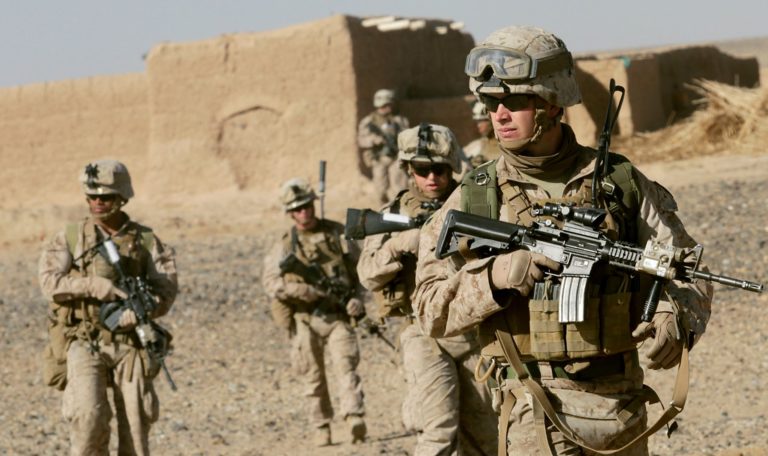ALS Highly Prevalent Among Young Post-9/11 Veterans

CCK Law: Our Vital Role in Veterans Law
In October 2019, the journal of Military Medicine published a study titled: “Amyotrophic Lateral Sclerosis among Veterans Deployed in Support of Post-9/11 U.S. Conflicts”. Essentially, the findings of this study suggest that there is an early onset of amyotrophic lateral sclerosis (ALS) among deployed military service members.
What is ALS?
Amyotrophic lateral sclerosis (ALS) is a progressive nervous system disease that affects nerve cells in the brain and spinal cord, causing loss of muscle control. Signs and symptoms of ALS vary greatly from person to person, depending on which neurons are affected. Some of the most common signs and symptoms may include the following:
- Difficulty walking or doing normal daily activities
- Tripping and falling
- Weakness in your legs, feet, or ankles
- Hand weakness or clumsiness
- Slurred speech or trouble swallowing
- Muscle cramps and twitching in your arms, shoulders, and tongue
- Inappropriate crying, laughing, or yawning
- Cognitive and behavioral changes
ALS often starts in the hands, feet or limbs, and then spreads to other parts of your body. As the disease advances, it affects chewing, swallowing, speaking, and breathing. For most cases of ALS, the cause is not known. Researchers continue to study possible causes of Amyotrophic Lateral Sclerosis and most theories involve a complex interaction between genetic and environmental factors. There is currently no cure for this fatal disease.
Rates of ALS and Military Service
U.S. military service has been recognized as being a risk factor for ALS among studies in Gulf War veterans and among veterans from previous wars. Average annual cumulative incidence of ALS among Gulf War veterans was 0.43 per 100,000 persons, with a case rate of 6.7 per million among the deployed compared to 3.5 per million among non-deployed. However, recent studies are mostly limited to those who served in the post-9/11 U.S. wars in Iraq and Afghanistan. Post-9/11 war veterans do differ with other war era veterans in terms of age, injury severity, disability, and survival, in addition to unique occupational exposures, which may result in excess risk for ALS. Nonetheless, there has not yet been any research conducted on the occurrence of and factors associated with ALS specific to post-9/11 deployed U.S. war veterans.
Relationship between ALS and Traumatic Brain Injury (TBI)
Some evidence suggests that even a single traumatic brain injury (TBI) can precipitate or accelerate age-related neurodegeneration and has been considered a possible trigger of ALS. Specifically, previous studies demonstrated a threefold increased risk of ALS among those with a history of TBI compared to those without TBI. Given the relatively high prevalence of TBI among post-9/11 veterans, it is important to examine the association of TBI with Amyotrophic Lateral Sclerosis in this population.
About the ALS Study
While military service is associated with ALS in U.S. veterans, no specific characteristic of military service (e.g., combat, place of deployment, service branch) has been consistently associated with ALS. As such, the goals of this study were to identify the prevalence of ALS among deployed post-9/11 veterans and determine if certain patient characteristics, such as TBI or military branch or occupation, are associated with risk for Amyotrophic Lateral Sclerosis. The study intended to enhance (1) the understanding of occupational exposures and (2) the ability of the Veterans Health Administration (VHA) to plan the resource needs that best address the complex needs of these disabled veterans cared for in VHA.
The researchers used roster data of individuals deployed in support of post-9/11 operations and identified 1,149,620 veterans who received care in the VHA between October 1, 2001 and September 30, 2015 (fiscal year 2002 – 2015). From there, the study population was categorized into ALS cases and no ALS. Importantly, ALS cases were further divided into the following categories:
- Definite ALS cases – had a record of an International Classification of Diseases, 9th Revision (ICD-9) diagnostic code of 335.20 in at least one data year (i.e., 2001 – 2015) and a code (VBA 8017)
indicating that the veteran is considered disabled due to ALS. - Possible ALS cases – had only the VBA 8017 code
- Other ALS cases – had the ICD-9 code of 335.20 in only one data year but fewer than five neurology visits in the same data source
Again, individuals who did not fall into these categories were classified as “no indication of ALS.”
Study Measures
Traumatic Brain Injury (TBI)
The study used previous data among veterans, which takes into account both clinical and diagnostic information from various available Department of Defense (DoD) and VHA sources to identify TBI status for each individual in the study.
Military Occupational Characteristics
Researchers used roster data that provided information on military status including Military Occupational Specialty (MOS) codes, component of service (active duty vs. National Guard/Reserve), branch of service (Army, Air Force, Navy/Coast Guard, and Marines), and rank (enlisted vs. officer/warranted officer).
Demographics
VHA inpatient and outpatient data were used to identify age on entry to VA (grouped into <45 years and ≥45 years), sex, and race/ethnicity.
Results of the ALS Study
A total of 226 cases of Amyotrophic Lateral Sclerosis were identified from the cohort over the 14-year study groups. Of these cases, 139 were categorized as “definite ALS,” 87 were classified as “possible ALS,” and 20 individuals who met criteria for “other ALS” were excluded. There were significant differences in demographic characteristics between definite cases of ALS and the others, with definite cases being more likely to be male and white. Definite Amyotrophic Lateral Sclerosis cases were also more likely to be (1) highly educated, (2) in the Air Force, (3) officers/warrant officers, and (4) Reserve/Guard compared to those with possible or no ALS. Importantly, the prevalence of Amyotrophic Lateral Sclerosis was similar among those with and without TBI.
ALS prevalence was highest (33.2 per 100,000) among Air Force personnel and lowest (4.4 per 100,000) among Marines compared to those in Army and Navy/Coast Guard. By major DoD occupational category, tactical operations officers (e.g., pilots, air craft crews, and missile combat operations staff officers) had significantly higher ALS prevalence compared to administrators and general officers, Supply and Service officers and handlers, communications and intelligence specialists, and electronic/electrical/mechanical equipment repairers. Essentially, the study found that having ALS was 2.2 times more likely among tactical operations officers compared to administrators and general officers, while there was no significant difference for TBI.
Why Does This Matter?
This study was the first to examine the prevalence of Amyotrophic Lateral Sclerosis among the population of U.S. veterans deployed in support of the post-9/11 conflicts. Although previous literature has identified military service as a risk factor for ALS, this study is the first to provide estimates by major DoD occupational categories. During the study period (fiscal year 2002 – 2015), the prevalence of Amyotrophic Lateral Sclerosis was 19.7 per 100,000 persons over 14 years. This is significantly higher than that reported for deployed Gulf War veterans, which was 5.8 per 100,000 over 10 years after the Gulf War. However, the researchers acknowledge that the two studies differed significantly in their sample characteristics and years of follow-up. Therefore, the results should be compared with caution. Compared with the Gulf War veterans’ data, this study’s sample of deployed post-9/11 veterans were relatively older. Since increasing age is associated with increased risk for ALS, this may explain a higher prevalence rate among this study’s population compared to the Persian Gulf War veteran population.
Again, the current study found that TBI was not associated with a diagnosis of Amyotrophic Lateral Sclerosis. Although head trauma has been linked to increased risk for a variety of neurodegenerative diseases, recent studies suggest that only repetitive TBI and not solitary moderate-to-severe TBI is associated with ALS and other neurodegenerative diseases. This study’s measure of TBI is based on diagnosis codes documented in VHA care, with no ability to identify repetitive TBI over the lifetime of the veteran or TBI due to neuromuscular conditions inherent in the onset of Amyotrophic Lateral Sclerosis. As such, this finding should be interpreted with caution as well.
Conclusion
In conclusion, the results of this study show a greater prevalence of Amyotrophic Lateral Sclerosis among the post-9/11 deployed U.S. war veterans and at a relatively younger age, with individuals in DoD occupational categories of tactical operations officers and health care workers being at highest risk. This increased risk suggests that deployed veterans are at increased risk of early onset of ALS compared to other populations. Future studies are needed to confirm the ALS risk among the independent military occupations by examining exposures specific to these occupations that are associated with ALS. Specifically, research examining military risk factors and occupational exposures that lead to early onset of Amyotrophic Lateral Sclerosis is needed to determine if occupational safety approaches can reduce risk for this condition. Overall, these findings further support VHA’s commitment to care of these service-connected disabled veterans through a National ALS System of Care with a mission to address and manage the multiple medical, physical, functional, psychological, and social effects of the condition.
About the Author
Share this Post
